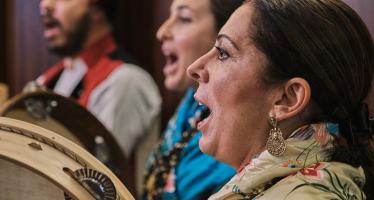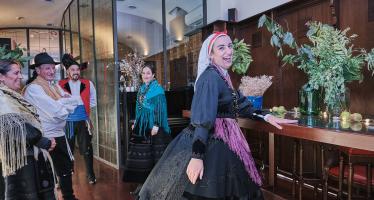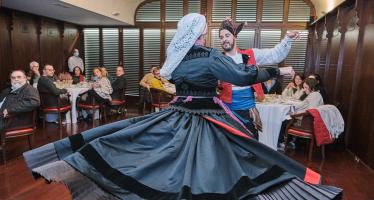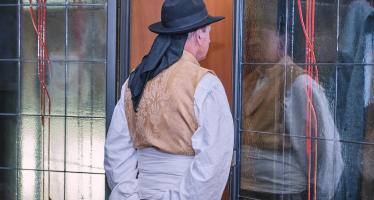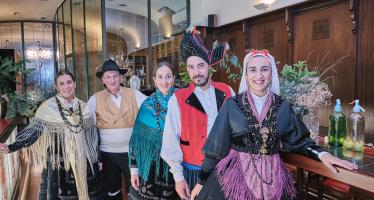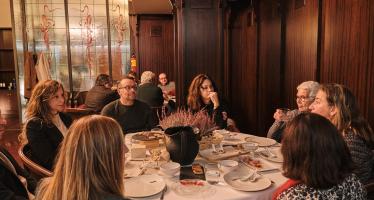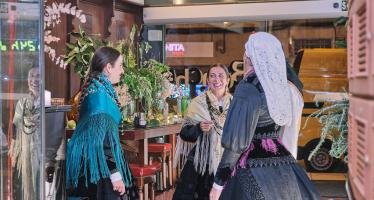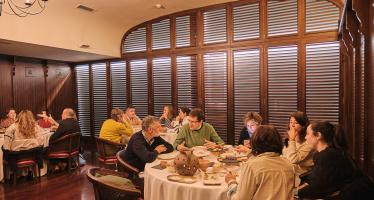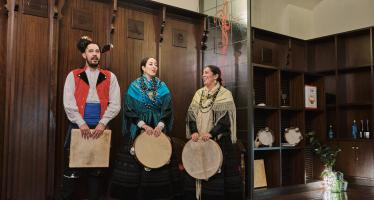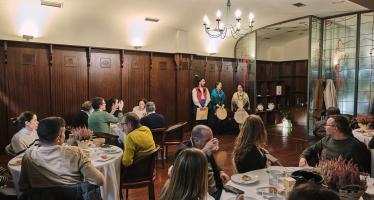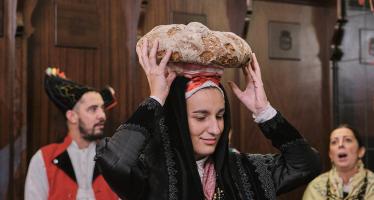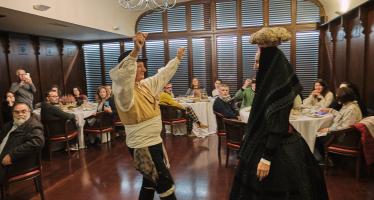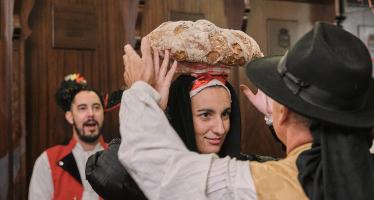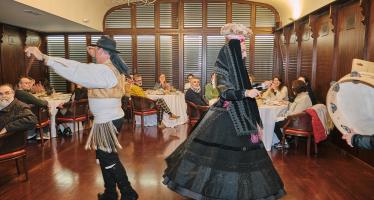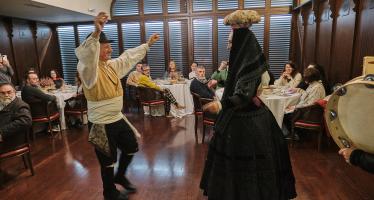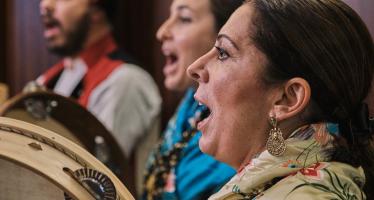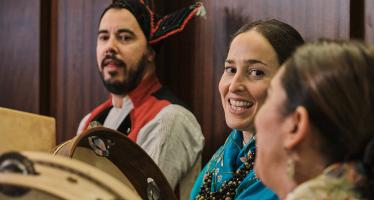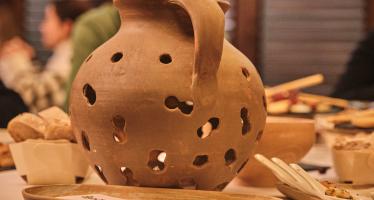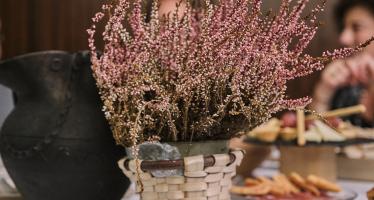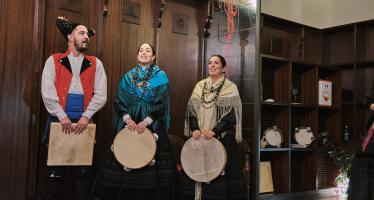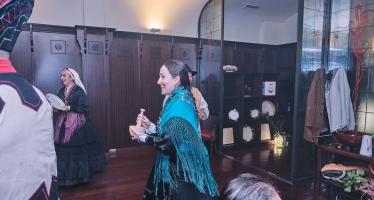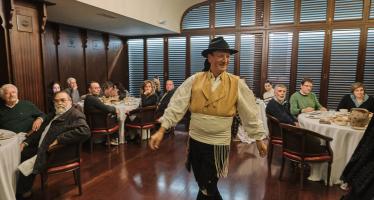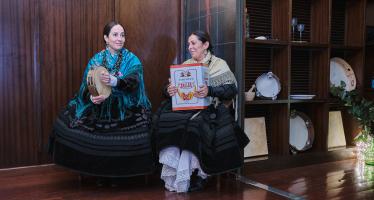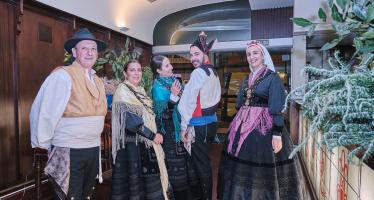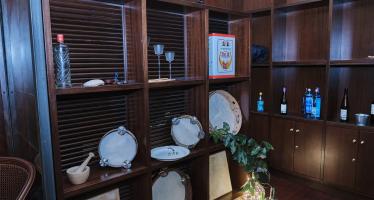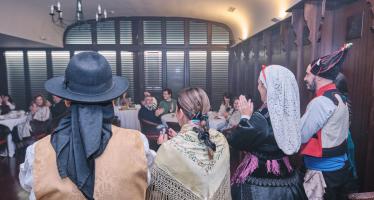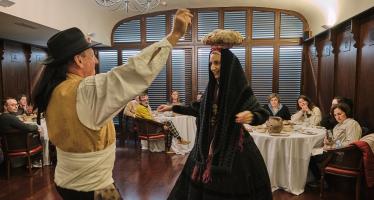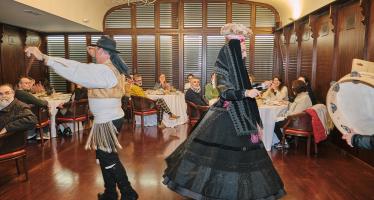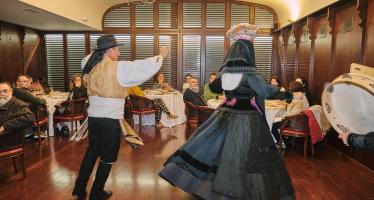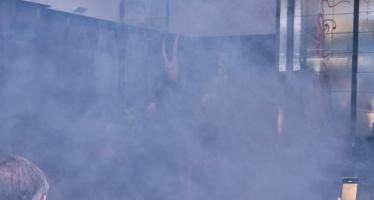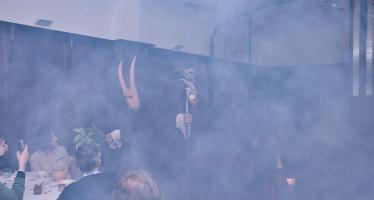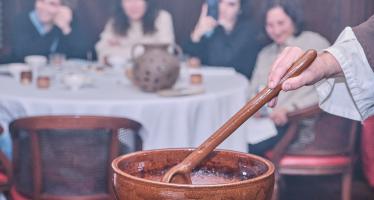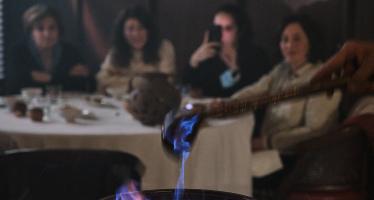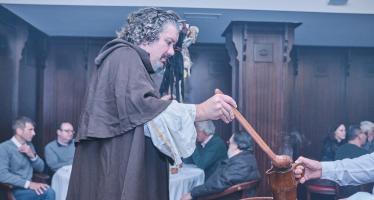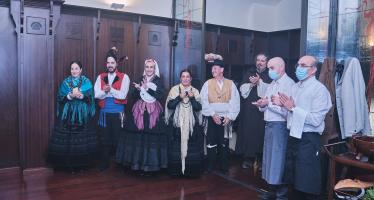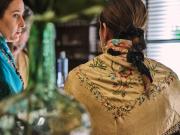- Home
- Products
Description
Galician Tradition
Gaicia Tradition is a show to the essence of Galicia through gastronomy, clothing and traditional music and dance.
The most authentic folklore will be represented by a group of artists dressed in traditional costumes. Roots music and dance that bring us closer to Galicia, and take us back in time to popular culture, to the festivals of yesteryear...
The show will be accompanied by a tasting menu with a flavor of Galicia. Traditional tapas with the best of Galician gastronomy, accompanied by wines with D.O. of our land.
The finishing touch will be the preparation and tasting of the Queimada. After lunch or dinner, we will finish wiht the Queimada, to encourage hearts and strengthen the bonds of friendship. The Queimador will be in charge of giving it the final touch by raising the burning liquid with a ladle and letting it fall little by little into the container while saying the spell, which creates a very special atmosphere.
What is included?
You can see a summary of the services included in the package
TRADITION
Tradition is a journey to the essence of Galicia through gastronomy, clothing and traditional music and dance. An enriching, entertaining and authentic show complemented by a quality gastronomic offer.
GASTRONOMY
We present a tasting menu with a taste of Galicia. Traditional tapas with the best of Galician gastronomy, accompanied by wines with D.O. of our land.
Cheese in Galicia is synonymous with tradition, flavor and excellence. 4 O.D. they shelter some of the best cheeses of Spain.
The empanada is another of the products that we can taste. In any home in Galicia, at any time of the year, we find this preparation in which a bread dough is combined with a filling of vegetables, meat, fish... Different theories link it with Arab, Swabian or Visigothic origins... although what is demonstrable is that King Alfonso X el Sabio already mentions it in his Cantigas de Santa María (S. XIII). Likewise, we can contemplate it in the Pórtico de la Gloria of the Santiago Cathedral, where Master Mateo showed the empanada as the greatest possible object of desire and gluttony.
The Galician estuaries are an important part of the more than 1,200 km of coastline. Their special environmental conditions, the warm temperatures of their waters, and the abundance of phytoplankton, make them an unbeatable space for the development of shellfish and fish, considered to be among the best in the world.
Galicia stands out for being the world's largest producer of mussels, which come from the rafts anchored in the estuaries of our territory.
The scallops and queen scallops are bivalve mollusks characteristic of our gastronomy. They are like small scallops or pilgrim shells that are present on Galician tables on special occasions. Its delicate sea flavor fills our palates.
Anyone who visits Galicia cannot leave without trying the octopus á feira. It is a festive dish made with whole cooked octopus (generally in copper pots) that is present at festivals, fairs and pilgrimages throughout Galicia. It is served on wooden plates accompanied by olive oil, coarse salt and sweet or spicy paprika.
Ham and pork shoulder are products made from pork, cured or salted to prolong their conservation. The slaughter of the pig (matanza do porco) in Galicia is much more than slaughtering an animal for food. Until not long ago, having a pig at home meant certain security and prosperity for families, the possibility of having a food rich in proteins, fats and nutrients that were so necessary, especially in the difficult times of the last century.
To finish the salty tapas, a very traditional elaboration in Galicia: Carne ao caldeiro. Served with potatoes, oil and paprika, it is a simple preparation that uses beef and potatoes (also within a Protected Geographical Indication). Simple recipe that triumphs for the high quality of the ingredients.
For dessert, nothing better than a good cheese with quince. A humble desktop that is present in almost all the tables of homes and restaurants in Galicia.
To drink, in addition to the water and beer from our land, we will taste white and red wine from one of the 5 Denominations of Origin that we have: Rias Baixas, Ribeiro, Ribeira Sacra, Monterrei and Valdeorras
Wines with an Atlantic character, fresh, fruity and balanced.
TRADITIONAL FOLKLORE
The most authentic folklore will be represented by a group of artists dressed in traditional costumes. Roots music and dance that bring us closer to Galicia, and take us back in time to popular culture, to the festivals of yesteryear...
The clothing shown is the so-called "to keep", made of rich fabrics such as cloth, velvet, brocade, silk... They were only used on special occasions such as patron saint festivities and weddings, and were common costumes in the 19th century in anywhere in Galicia.
One of the most common ways of spending time in rural Galicia was what were called “foliadas”, “seráns” or “ruadas”, often linked to different agricultural tasks (corn, wool, linen...). The residents of the villages gathered when the sun began to go down to sing, dance and have fun. It should be noted that the characteristics of the traditional music and dance of each region were very different from each other, since it was difficult to move to other places, so hundreds of different ways of singing and dancing were created.
Both men and women sang muiñeiras, jotas and other traditional rhythms to the sound of tambourines, pandeiros and pandeiras, percussion instruments very common in Galicia. Likewise, any household utensil was used to accompany the couplets and songs such as wooden spoons, anise bottles, scallop shells or mortars.
The use of carbide or paprika cans as instr
Useful information
Optional services
Transfer to the hotel
Prices
- Single room: 95.00 €
